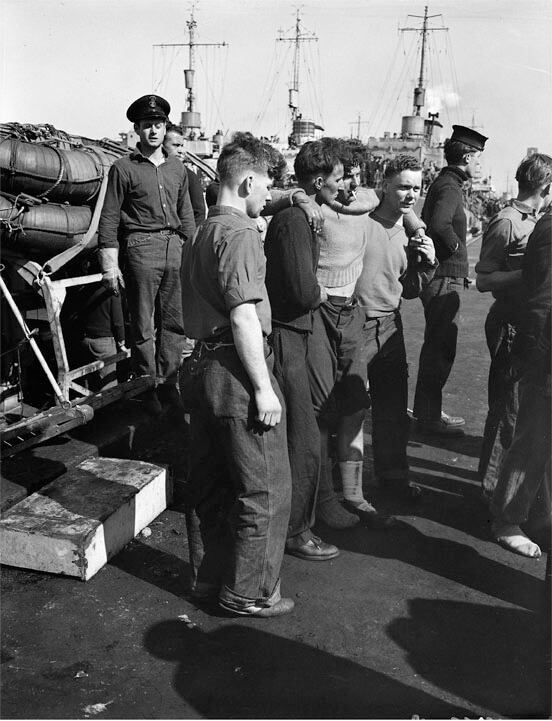
HMCS Esquimalt.
[Wikimedia]
Gone were the days of Die Glückliche Zeit—or ‘The Happy Time,’ as the German Kriegsmarine’s initial success in the Atlantic had once been known. The Battle of the St. Lawrence, while not quite a distant memory, had never posed the same existential threat as it had back in 1942. Indeed, over the years since, the so-called wolf-pack hunters had largely become the hunted.
If there was a false sense of security, it was perhaps not entirely misplaced.
At 5:15 a.m., an ear-piercing whistle shattered the early morning calm aboard Esquimalt. The crew soon found themselves poised at depth charge throwers as they awaited further orders. Meanwhile, the ship continued without employing the recommended zigzagging course, nor did it use the two Canadian Anti-Acoustic Torpedo (CAT) devices in its arsenal.
Nevertheless, by around 6:00 a.m., those at action stations were relieved in the absence of enemy submarine sightings. The seamen resumed their routine duties, drank coffee, shared jokes and carried on as normal.
For some, however, it would be their last job, their last cup and their last time with friends as, about a half-hour later, U-190 would strike.

Survivors of the minesweeper HMCS Esquimalt in Halifax, April 16, 1945. [Lt. Richard G. Arless/Department of National Defence /Library and Archives Canada/PA-157021.
LAC]
The Bangor-class minesweeper disappeared beneath the waves in less than four minutes—all within view of Halifax.
Yet, most pressing for those who had escaped the ship, was staying afloat until rescue arrived. HMCS Sarnia, which was scheduled to rendezvous with Esquimalt later that morning, was nowhere to be seen. The overcrowded rafts, some carrying more than a dozen sailors, drifted helplessly as the men began to succumb to either their wounds or hypothermia.
Hours passed. Finally, authorities mobilized a search-and-rescue mission after failing to contact the minesweeper. It turned out that Sarnia, suspecting that Esquimalt had been torpedoed, had correctly followed the officially sanctioned protocol of hunting the U-boat rather than assisting would-be survivors.
Alas, efforts to find U-190 were in vain. The Type-IX submarine did not surrender until May 11, by which time the war was over. In the three weeks between the sinking and VE-Day, the Canadian government had censored the news and prevented those remaining sailors from sharing their stories.
Esquimalt was the last Canadian warship lost to enemy action during the Second World War. A total of 28 lives were claimed that April 16, a tragedy made all the more painful by its closeness to relative safety and, above all else, its closeness to the entire conflict’s conclusion.
Advertisement



















